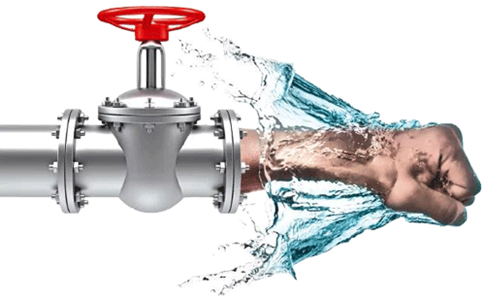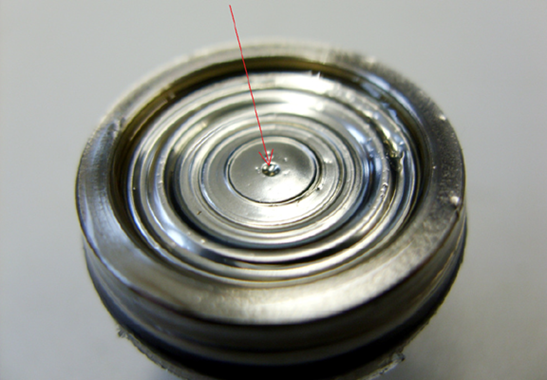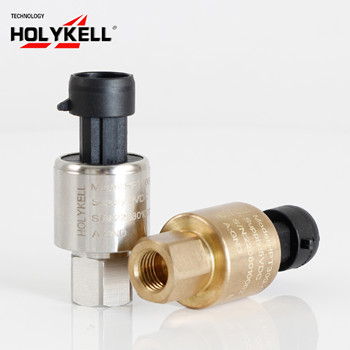How to Prevent Water Hammer from Damaging Pressure Sensors?
What is Water Hammer Phenomenon?
Water hammer, also known as hydraulic shock, is a common hydraulic phenomenon that occurs in fluid transport systems, typically in pipes or pipelines carrying liquids, such as water.

Causes of Water Hammer Phenomenon
The water hammer can be caused by various factors, including:
Sudden Valve Closure or Opening: Abruptly closing or opening valves in a pipeline can generate water hammer effects due to the rapid change in fluid flow.
Sudden Start or Stop of Water Pump Systems: When water pumps are suddenly started or stopped, it can result in pressure waves within the pipeline.
Water Transport to Higher Elevations: Transporting water uphill (where there is a significant elevation difference, exceeding 20 meters) can lead to water hammer effects.
High Total Head (or Operating Pressure) of Water Pumps: Systems with high head pressure can experience more pronounced water hammer effects.
Excessive Fluid Flow Velocity in Pipelines: High fluid flow rates can intensify the water hammer phenomenon.
Inadequate Pipeline Design: Poorly designed pipelines, including mismatched diameters, excessive length, or improper bends, can contribute to water hammer.
Non-standard Construction Practices: Water hammer effects can be exacerbated by improper construction practices.
Hazards of Water Hammer
While pressure waves typically dissipate rapidly, the pressure spikes generated during water hammer can cause significant damage. The increase in pressure can reach several times or even tens of times the normal working pressure of the pipeline. The main hazards associated with water hammer effects on pipeline systems include:

Pipeline Rupture: Water hammer can lead to the rupture of pipelines.
Damage to Valves and Pipeline Connections: Valves and pipeline connections can be damaged or compromised due to the shock.
Pump Reversal: Water hammer may cause water pumps to reverse, resulting in equipment damage or flooding in pump rooms, with the potential for injury or fatalities.
How to Prevent Water Hammer
Preventing water hammer requires various measures tailored to the specific causes. Some preventive measures include:
Reducing Fluid Flow Velocity: Lowering the flow velocity within the pipeline can reduce the water hammer effect, but this may necessitate larger pipe diameters and increased project costs.
Reducing Pipeline Length: Shorter pipelines experience less severe water hammer effects. Creating multiple pump stations and connecting them with suction wells can help reduce water hammer.
Proper Pump Head Selection: Choosing an appropriate pump head based on local conditions can mitigate water hammer risks.
Filling the Pipeline with Water Before Pump Start: After pump shutdown, ensuring the pipeline is fully filled with water before restarting the pump can help prevent water hammer.
Partial Valve Opening during Pump Start: Gradually opening the outlet valve of a pump during startup can reduce water hammer effects.
Installing Water Hammer Dampers: Professional water hammer dampers can mitigate pressure spikes by functioning similarly to shock absorbers, reducing noise and pressure fluctuations.
When using pressure sensors for pipeline pressure monitoring, it’s essential to be aware that pressures exceeding the sensor’s overload limit can damage the sensor. To prevent damage caused by pressure spikes, it’s advisable to use dampers designed to withstand water hammer.
However, such modifications can have drawbacks, such as pipeline blockages due to calcification and deposits, especially in solid and suspended media, which can slow down measurement signal response.
Holykell Pressure Sensor HPT300 Series Effective Against Pressure Spikes
Our pressure sensor HPT300 Series adopting ceramic cores that feature layered structure, is particularly effective against pressure spikes. Besides, for applications that are subject to water hammer, we generally add additional dampers to further protect our sensors. That’s the reason why our products are trusted by our customers.

For more technical support, pls contact us.





